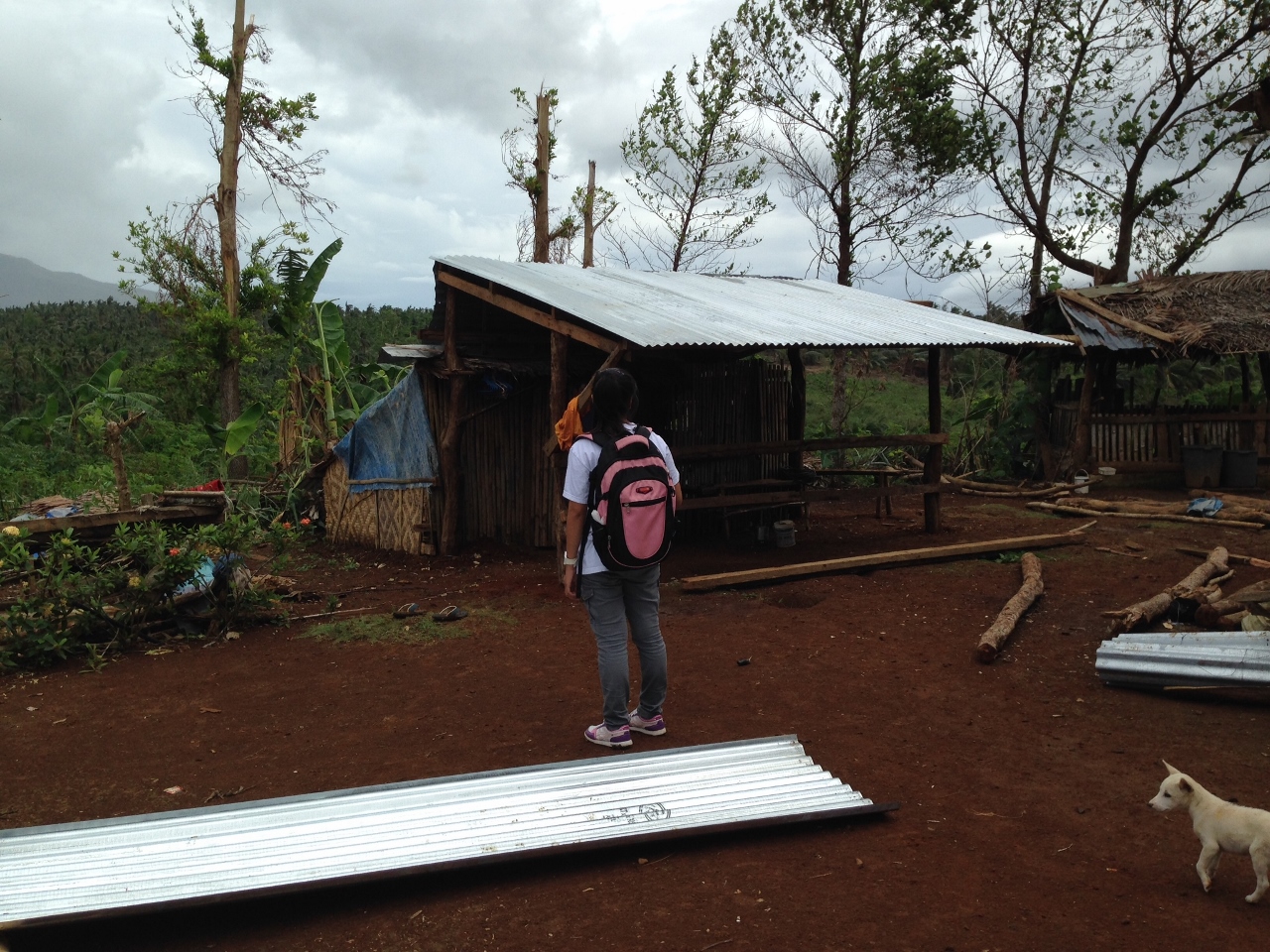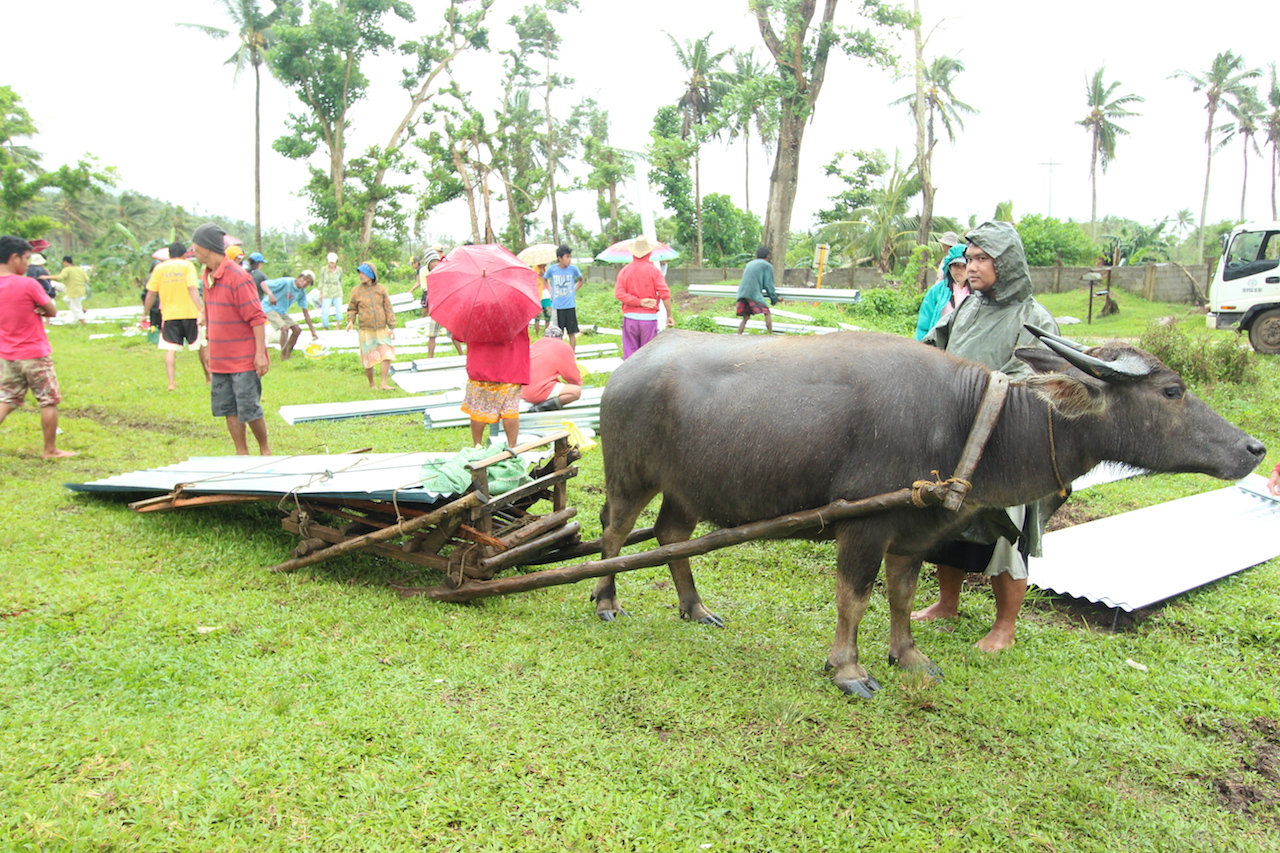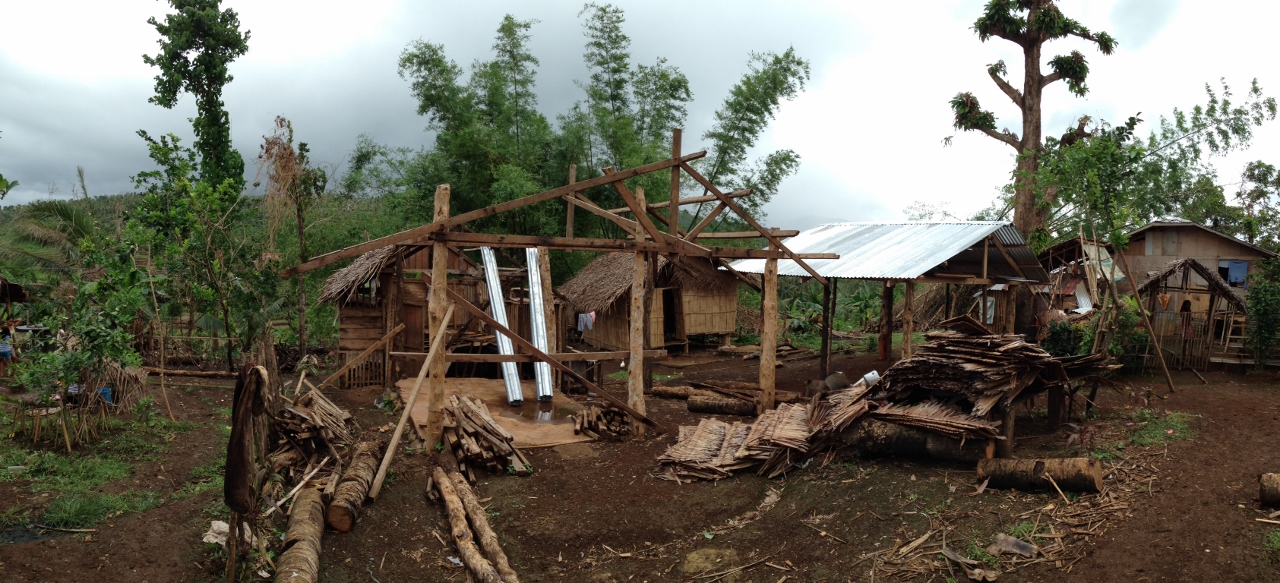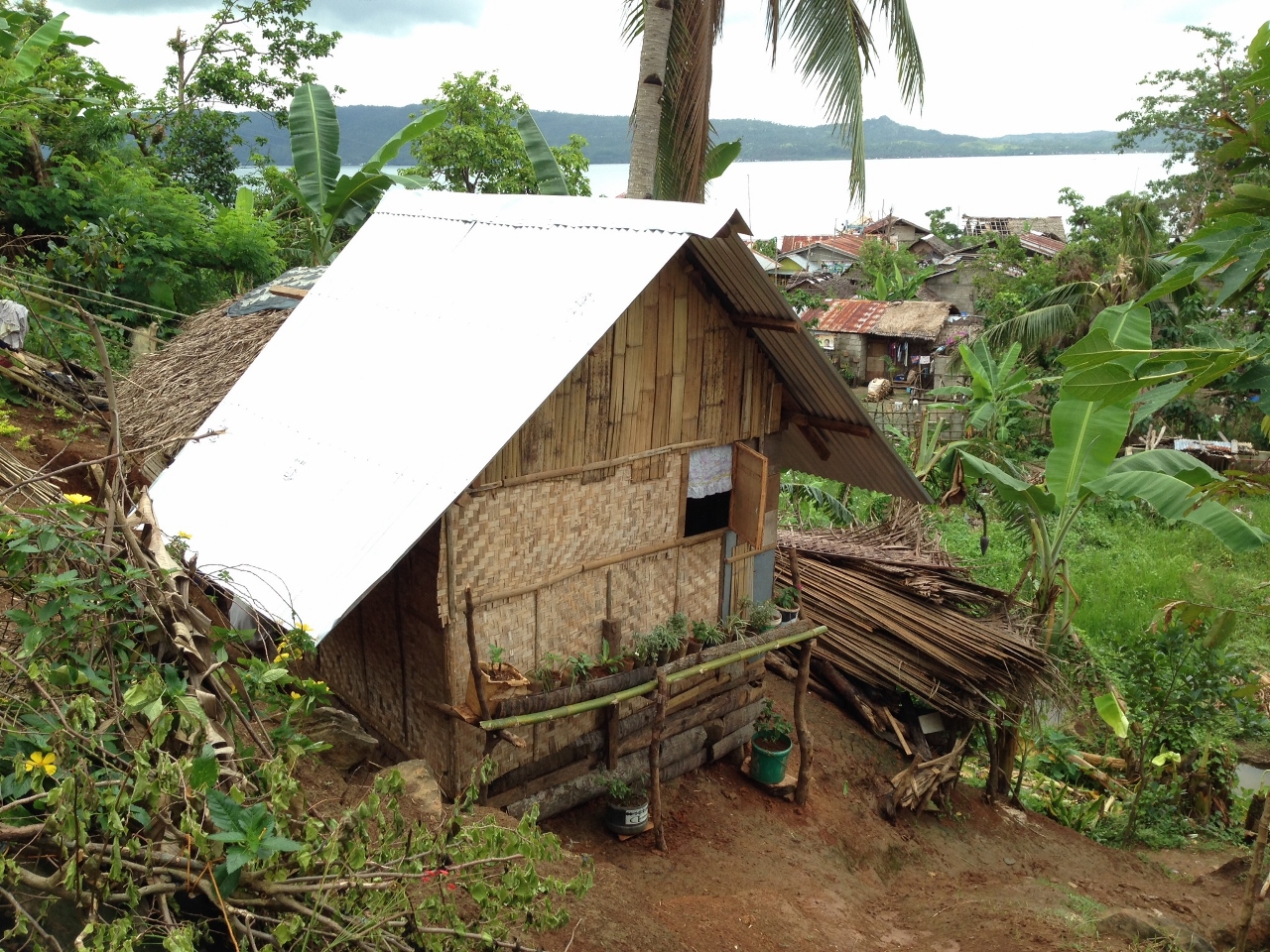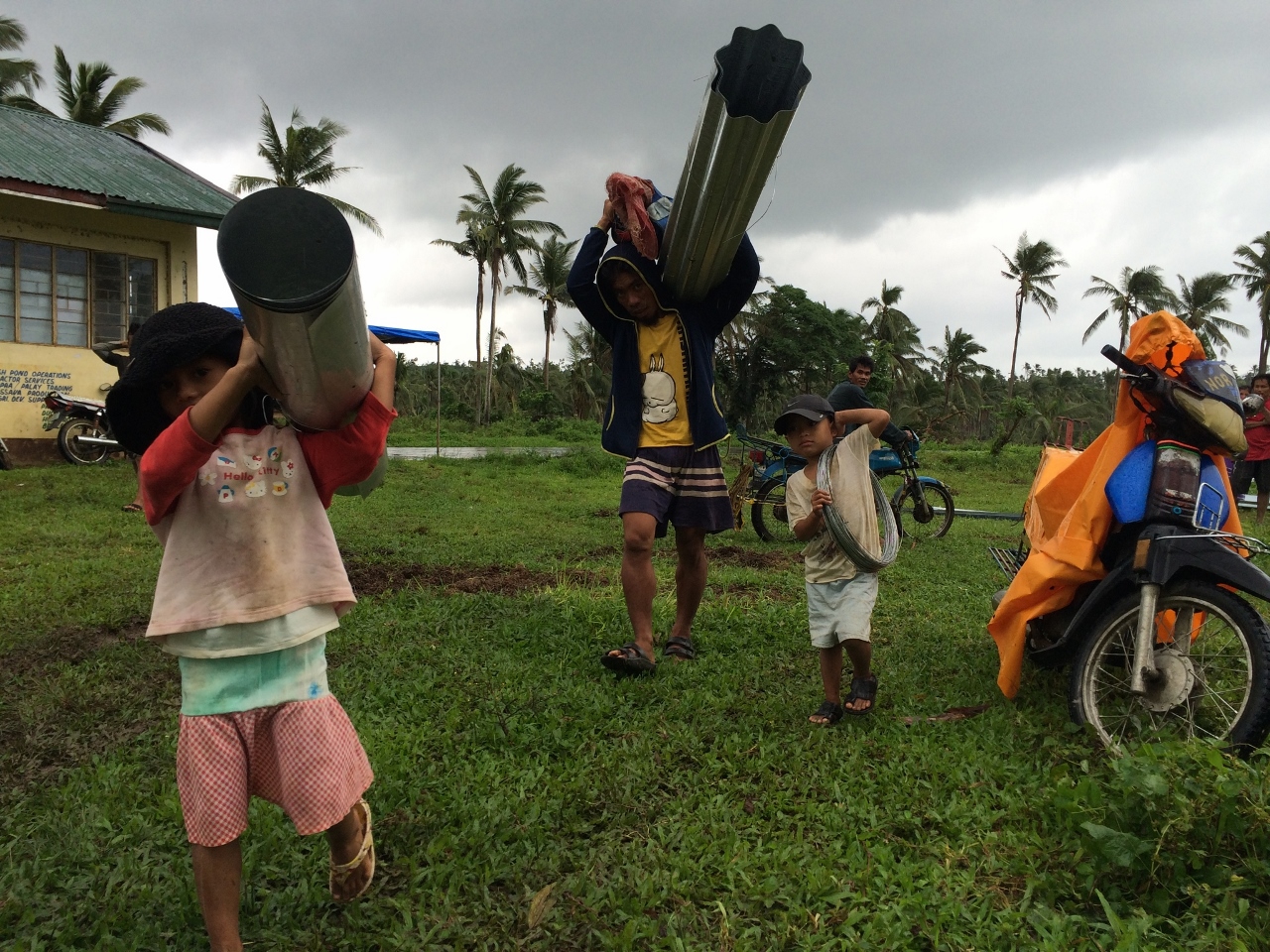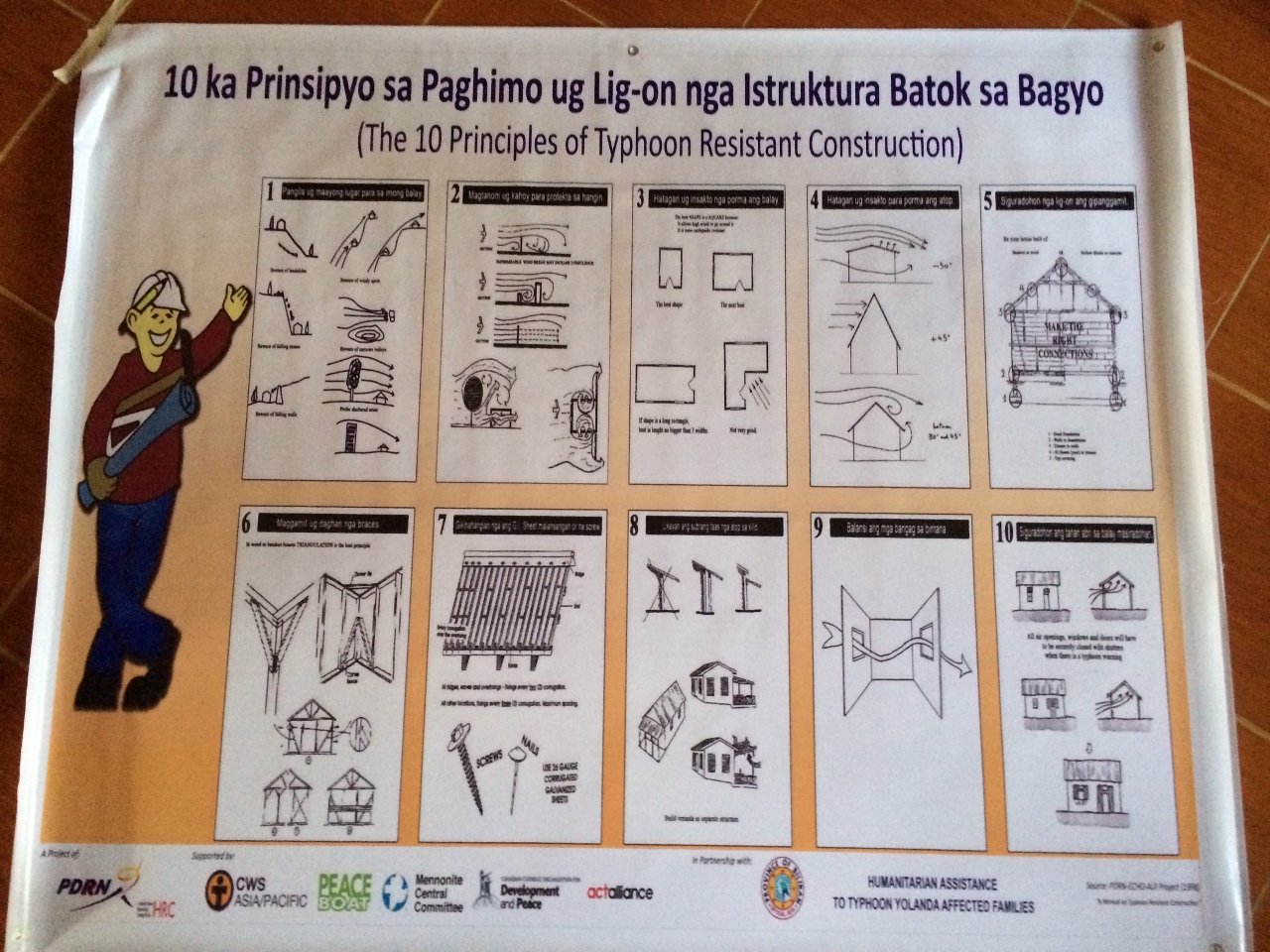
Activity Reports
Philippines: Typhoon Haiyan Relief Update #5
February 17, 2014
“We are so glad that they are helping families like us; families without a stable income and who struggle from day-to-day with poverty. We have a lot of mouths to feed and I do not have a steady job, so I cannot guarantee that I can feed my entire family every day. Before we received the supplies, we were interviewed about our family situation and what we needed; I am thankful that they really take into account our living circumstances.”
This is the feedback received from Gary (wearing a blue T-shirt in the photograph) who requested an emergency shelter repair kit for his family. He lives in the barangay (town) of Busali on Biliran Island with his six children.
PBV has been on the ground in the Philippines since November 2013, after Typhoon Haiayan ripped through the area and left behind one of the most severe humanitarian crises in recent times.
One of the difficulties of working in this complex setting is determining who, among all the survivors, should be helped first. With limited resources and no shortage of needs, it is crucial to identify the priority cases at a time when so much is at stake.
It is not simply a matter of identifying families whose homes have been totally destroyed. Households with infants, elderly family members, persons living with disabilities or severe medical conditions may be identified as priority cases. Other family-related circumstances are also taken into account, in order to achieve the most accurate and fair needs assessments of affected communities.
Working with scare resources and a small number of personnel, it is also sometimes difficult to differentiate between pre-existing development-related issues (such as poverty and lack of clean water) and damage resulting directly from Typhoon Haiyan.
With the active participation of local stakeholders, PBV and partner PDRRN are distributing emergency shelter repair kits and kitchen starter kits to 1,010 households in 15 barangays on Biliran Island.
Biliran City(Bato ×64、Busali ×68、Burabod ×94、San Isidro ×125)
Cabucgayan City(Balaquid x89、Looc ×88、Pawikan ×28)
Naval City(Atipolo ×92、Caraycaray ×91、Sto nino ×65、Calumpang ×85)
Caibiran City (Victory ×67、Union ×26、Manlabang ×23、Cabibiran ×28)。
*PBV funded the procurement and distribution of supplies in the barangays of Bato, Busali and Burabod.
This photo portrays an ox carrying relief supplies.
Some of the families rebuilding their homes show incredible resourcefulness; along with the emergency shelter repair kits, they use items that are readily available in their communities (such as fallen coconut trees) to creatively reconstruct their homes. Given the sheer amount of construction work to do in the area, there is a shortage of carpenters. This shortage in provincial areas is exacerbated by the flow of construction-related workers to the urban centers of the affected region, including the City of Tacloban, where there is more earning potential.
Monitoring and Evaluation are both vital parts of any humanitarian project. Ensuring that stakeholders can voice their opinions and maintaining a balanced, fair approach to community assistance is vital to providing effective aid. Beneficiaries and local stakeholders should always be at the center of relief activities and any complaints or feedback should be addressed and considered to improve the overall effectiveness of the project. Staff make regular field visits to interview beneficiaries, build relations with local residents and liaise with community leaders.
The rainy season in the Philippines usually finishes in November. However, this past year, the rains continued well into December and January and a number of distribution days were postponed.
The distribution schedule for all 15 barangays (towns) is rather puzzling. While carrying out distributions in one town, preparations are made for the next town and while distributions are carried out at the next town, staff monitor progress in the previous town… However, despite all of the logistical challenges, this process of monitoring and evaluation has revealed that over 90% of the distributed supplies are being used by the beneficiaries.
Below is an excerpt of a conversation with another beneficiary.
The 4-year old photographed above recalled his experiences of the typhoon: “Everything was blown away when the typhoon hit and we lost our roof. Now I am happy because we have one.” His father, Sonny, remarked “I am glad that we had the orientation/lecture explaining the 10 Principles of Typhoon Resistant Construction. This was very useful.”
The houses that are made from these emergency shelter kits are not as sturdy as those in Japan. Even though a typhoon of Haiyan’s severity is a rare occurrence, typhoons will continue to pass through the area for many years to come.
The Philippines is frequently affected by typhoons; to foster long-term resilience within communities, Disaster Risk Reduction principles must be incorporated in the post-Haiyan recovery process. In other words, efforts must be made today in order to minimize tomorrow’s disaster risks and hazards. The orientations held to empower community members to build strong houses through the “10 Principles of Typhoon Resistant Construction” are a prime example of this. In another example, the Government of the Philippines and the UNISDR (United Nations International Strategy for Disaster Reduction) are working in tandem to promote disaster education in schools across the country to improve civil disaster preparedness for future disasters.
Starting this month, PBV and PDRRN will commence the distribution of kitchen starter kits.





